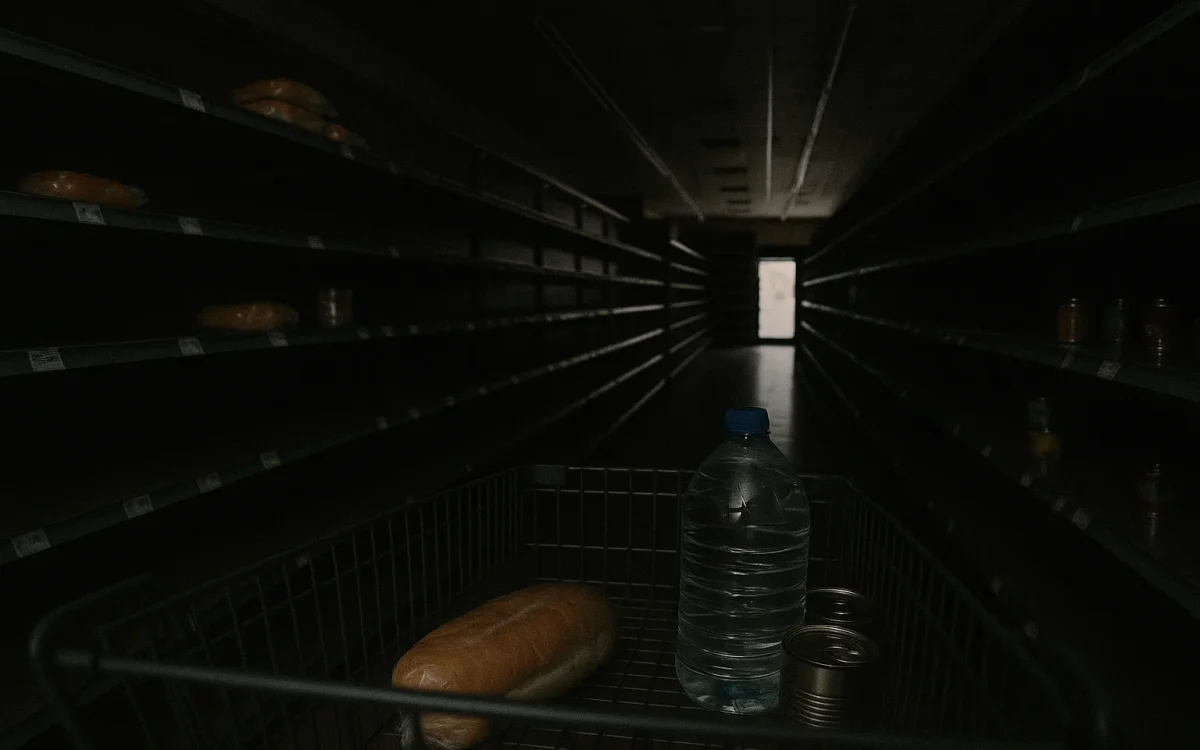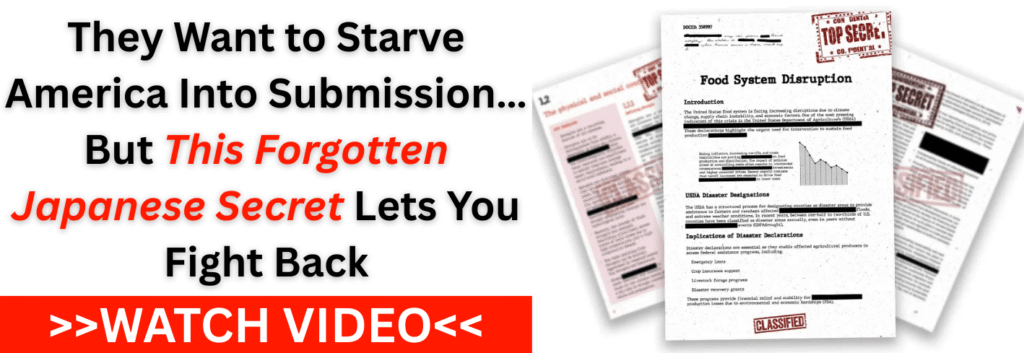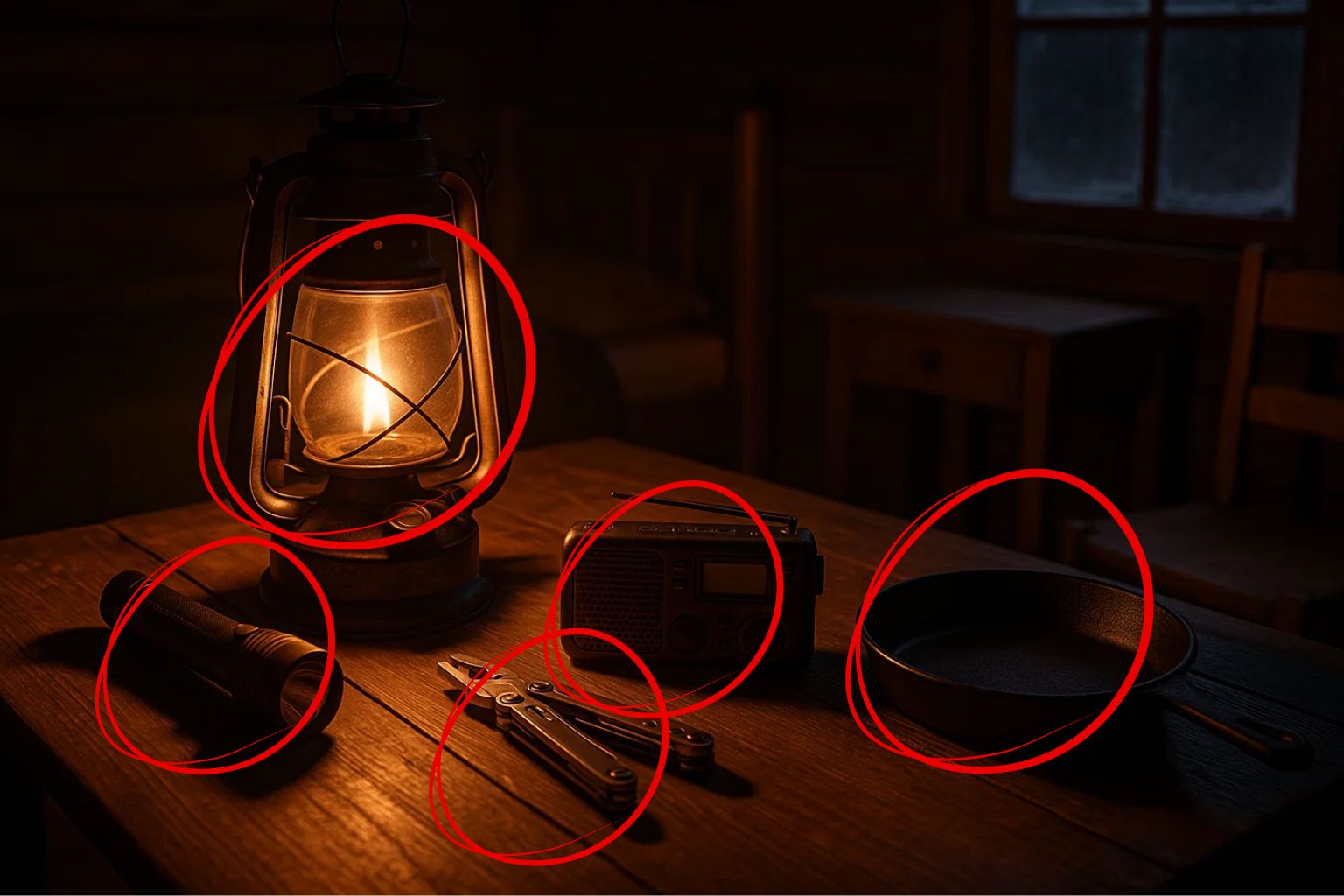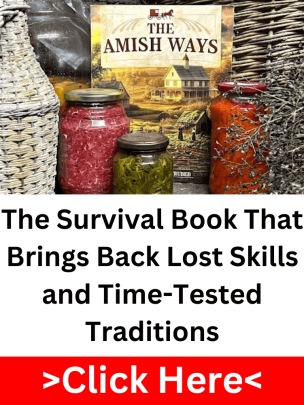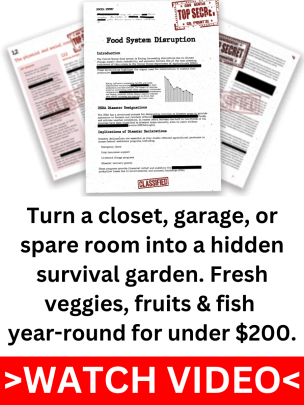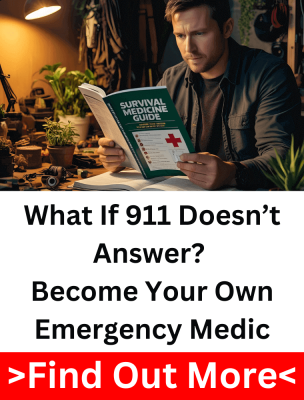The lights cut out without warning. One second the hum of the fridge and the glow of the TV are part of the background, the next you’re standing in silence with nothing but darkness pressing in. Across town, the same thing happens in every home. Within minutes, headlights flood the streets as people pile into cars and rush to the nearest grocery store, desperate to grab whatever they can before it’s gone.
Here’s the hard truth most folks miss: in a major blackout, shelves don’t empty in days, they’re bare in hours. The real question is which items vanish first, and whether you’ve already got them at home. Because knowing what disappears in those first frantic runs isn’t just trivia, it can be the difference between feeding your family and staring at an empty pantry.
The Panic Factor: Why Shelves Empty in Hours
When the grid fails, panic spreads faster than the darkness. We’ve seen it happen after hurricanes in Florida, during the Texas freeze of 2021, and even in the Northeast blackout years ago. In every case, stores went from fully stocked to stripped bare in just a few hours. Bread, milk, water, batteries, gone almost instantly. People don’t calmly make a list and shop. They rush in with carts, grab whatever looks useful, and race to the checkout before the next person beats them to it.
This is what’s called the herd effect. One person panics and buys six gallons of milk or twenty loaves of bread, and suddenly everyone else feels like they have to do the same. Fear spreads aisle by aisle. Even people who showed up just to buy a few basics start overloading their carts because they don’t want to be the ones left behind.
That’s why waiting is a losing game. In less than three hours after a major blackout, the most critical supplies are gone. By the time latecomers pull into the parking lot, the only things left are oddball items nobody wants or can use. If you’re not ahead of that first rush, you’re out of luck.
The First Aisles to Collapse
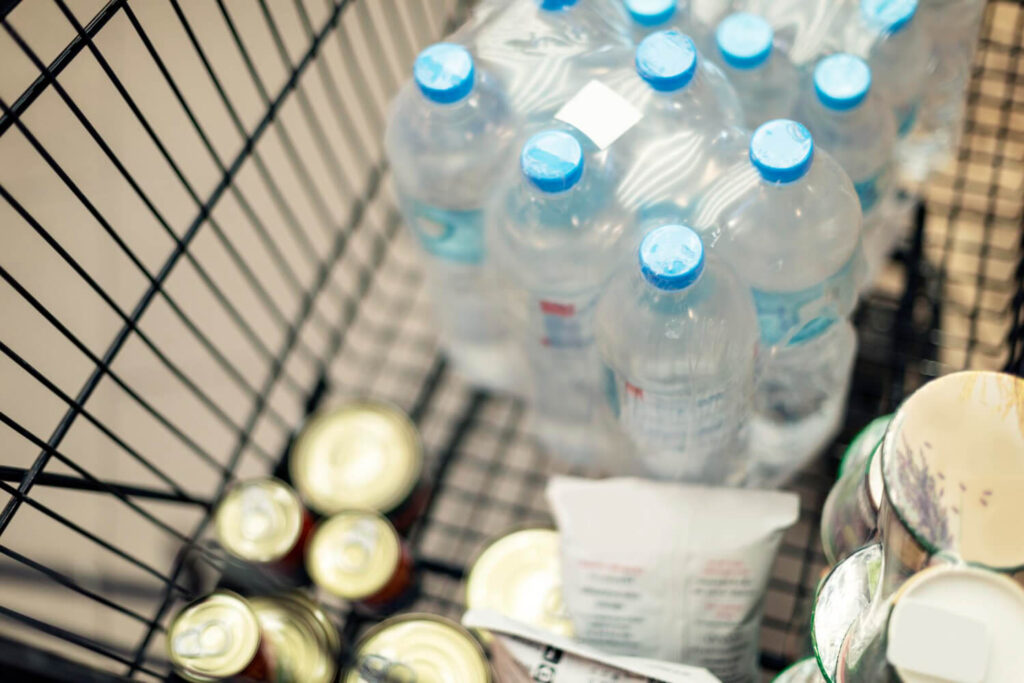
As soon as the blackout hits and the rush begins, not every aisle takes the same beating. Some spots in the store empty almost instantly. Bottled water goes first, stacked cases disappearing from pallets in minutes. Right behind it, the bread shelves are stripped, along with milk coolers and anything perishable that people grab out of habit, eggs, cheese, and meat. These aren’t just groceries; they’re comfort foods people reach for without thinking, and they vanish before anything else.
Other Article: 7 Weapon Skills Preppers Must Master Before SHTF
That pattern isn’t random. It comes down to two simple drivers: psychology and survival. People panic and grab the foods they know, staples they eat every day, things their families are used to. At the same time, survival instincts push them toward the basics of hydration and calories. Water is non-negotiable, and bread, milk, and meat feel like security in a crisis. Together, those forces make certain aisles collapse long before the rest.
Water and Drinks — Gone Before Anything Else
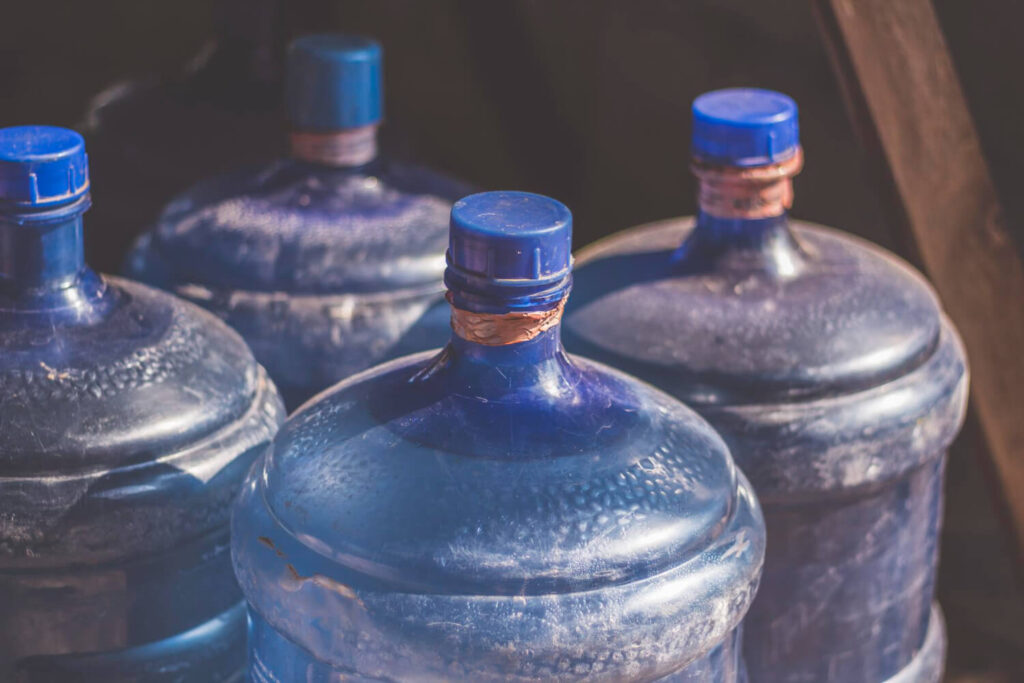
Bottled water is always the first casualty in a blackout. People know they can’t survive without it, and panic buying clears the shelves almost immediately. FEMA recommends storing at least one gallon per person per day, but most households don’t have that on hand. When the lights go out, families rush for cases of bottled water, often grabbing far more than they can carry. Within the first hour, pallets that once looked endless are stripped down to nothing.
It’s not just plain water, either. Juices, sports drinks, and soda fly off the shelves almost as quickly. They’re familiar, they taste good, and parents especially grab them for kids who might refuse plain water. They may not be the most practical choices for hydration, but in a panic, people take whatever liquid they can get.
That’s why preppers don’t wait. Storing water ahead of time is one of the simplest and smartest moves you can make. Fill sturdy jugs, keep extra on shelves, and invest in a reliable water filter so you’re not depending on last-minute store runs. Once the blackout starts, it’s already too late to add water to your cart.
Bread, Milk, and Dairy — Comfort Foods That Vanish Fast
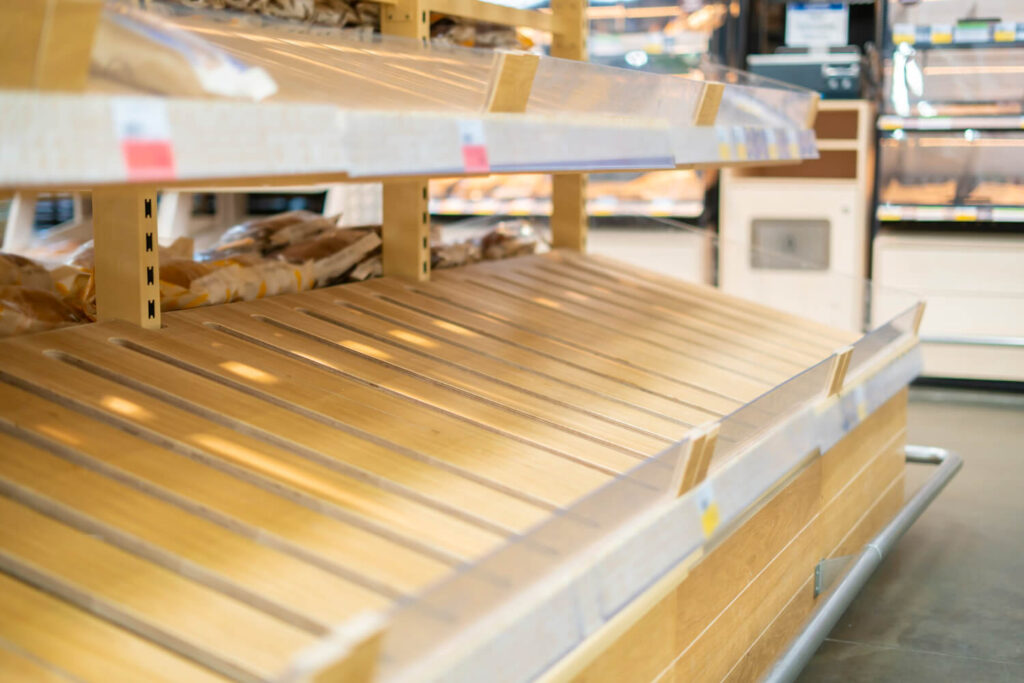
Bread is one of the first things to disappear, and it’s not because it lasts, it doesn’t. With a short shelf life, loaves of bread should be the last thing people hoard, yet in a blackout they’re snatched up immediately. Habit plays a big part here. Families are used to starting the day with toast or sandwiches, and when fear takes over, they grab what feels familiar. The result is empty bread aisles within hours, even though those loaves won’t last more than a few days without refrigeration or preservatives.
Other Article: The No-Nonsense Way to Stock Real Survival Food
Milk and dairy follow the same pattern. Everyone knows they spoil quickly, but panic shopping drives people to toss gallons of milk, tubs of yogurt, and blocks of cheese into their carts anyway. It feels like security in the moment, even if half of it goes bad by the week’s end. Smart preppers don’t play that game. They stock alternatives like powdered milk, canned evaporated milk, or shelf-stable cartons that can last months instead of days. Those options might not taste exactly like fresh milk, but they’ll keep your pantry ready long after the blackout begins.
Eggs and Fresh Meat — Panic Buying Before Spoilage
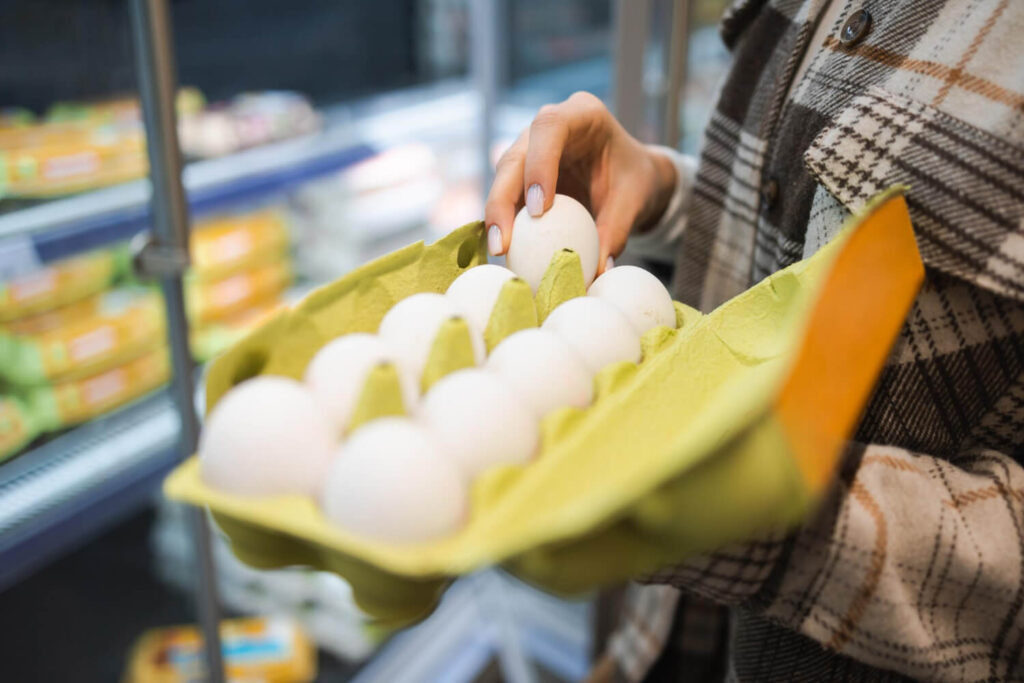
Eggs are another grocery item that vanishes quickly when the lights go out. They’re cheap, packed with protein, and most families eat them almost every day. In a crisis, people instinctively grab a few cartons thinking they’ll stretch meals a little longer. The problem, of course, is that eggs don’t keep well without refrigeration, and once the grid is down, that safety net disappears fast.
Fresh meat is treated the same way. Families load their carts with chicken, beef, or pork, planning to either freeze it or cook it right away. The rush makes sense, meat is filling, familiar, and versatile. But without steady power, freezers stop being reliable. Folks often end up losing half of what they bought, tossing spoiled cuts they couldn’t eat in time.
That’s where knowing your limits matters. A closed freezer only keeps food safe for about 48 hours, and that’s assuming nobody keeps opening the door. Instead of relying on short-term fixes, preppers lean on longer-lasting options: canned chicken or beef, freeze-dried proteins, even shelf-stable tuna or Spam. They don’t look as appealing in the store, but they’ll keep you fed long after the fresh meat has spoiled.
Shelf-Stable Proteins — Peanut Butter, Cans, and Beans
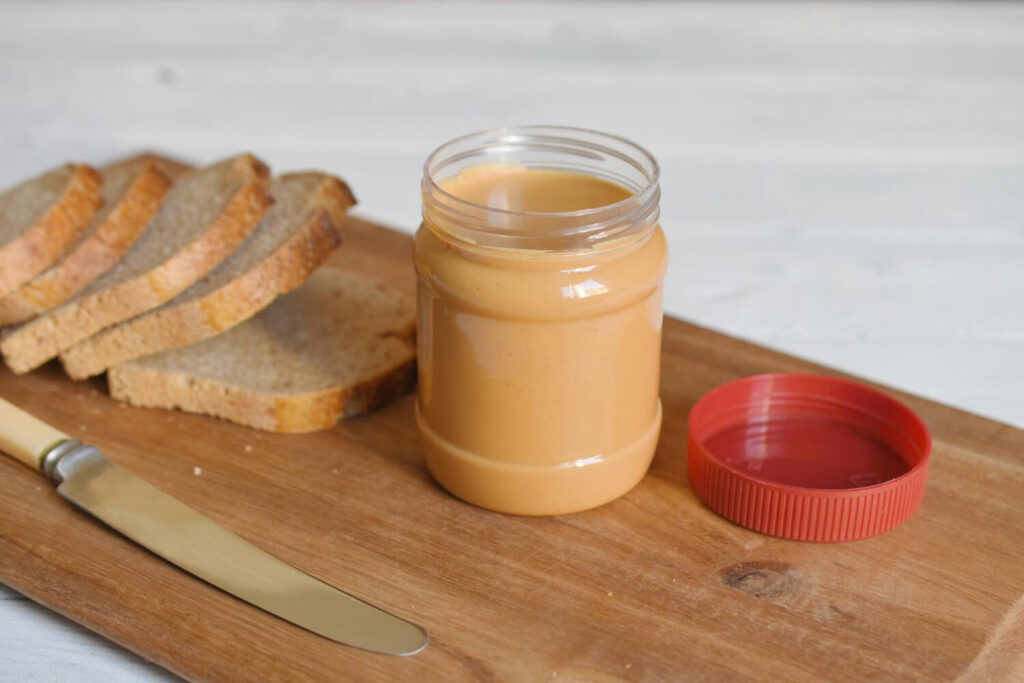
Peanut butter is one of the smartest foods you can have when the power goes out. It’s dense in calories, packed with protein, and doesn’t need any cooking. You can spread it on crackers, mix it with oats, or just eat it straight off the spoon. That kind of versatility is why it’s one of the first things to disappear from shelves in a blackout. Shoppers know it’ll keep them going when other foods run out, so jars get cleared out in no time.
Other Article: Survival Fishing Gear: Rods You Can Trust When SHTF
Canned proteins follow the same pattern. Tuna, chicken, Spam, and beans are all “ready to eat” survival foods. They don’t require refrigeration until they’re opened, and they can be eaten cold if you don’t have a way to cook. In a crisis, that’s gold. It’s no surprise these cans vanish almost as fast as bottled water. For preppers, stocking up on these ahead of time isn’t optional; it’s a cornerstone of any serious food supply.
Staple Carbs — Rice, Pasta, and Flour Fly Off Shelves
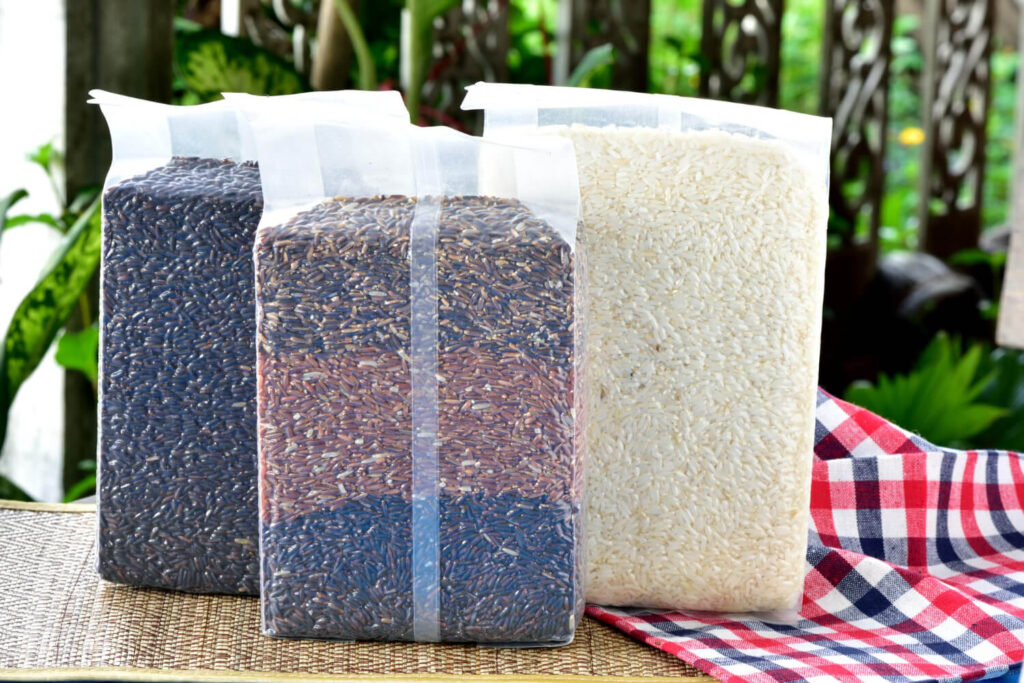
Rice and pasta are some of the first dry goods to get wiped out in a blackout. They’re inexpensive, filling, and can stretch meals farther than most foods. A single bag of rice or box of spaghetti can feed a family for days, which is why people grab them in bulk as soon as they hit the store. They also have a long shelf life, so even folks who don’t normally stockpile see them as a safe bet during a crisis.
Flour and sugar disappear quickly too. They’re the backbone of baking, and when panic hits, people fall back on the idea of making bread, pancakes, or simple baked goods to get through. It’s part practicality, part habit; families think about the foods they’re used to and stock up without realizing how fast those supplies can vanish from the shelves.
For preppers, the twist isn’t just buying these staples, but storing them the right way. Rice, pasta, flour, and sugar can last years if kept in airtight containers with oxygen absorbers, away from moisture and pests. Without that kind of storage, they’re just another short-term fix. With it, they become a foundation that can carry you through a long-term blackout without worry.
Comfort Items — Coffee, Snacks, and Candy Keep Morale Up

Sometimes it’s not the main course that keeps you going, but the little things that make life feel normal. In a blackout, stress builds quickly, and that’s when small comforts matter more than most folks realize.
Coffee and tea, for example, are more than a morning habit. Caffeine helps keep focus sharp and moods steady when everything else feels uncertain. That’s why those shelves clear almost as fast as bottled water. For many people, a warm cup is a daily anchor they’re not willing to give up, even in the dark.
The same goes for candy and snacks. Parents grab them to calm restless kids, and adults snag them for their own stress relief. A bag of chips or a piece of chocolate can make long nights easier to handle, and in some cases, they become valuable for trade. Comfort food doesn’t seem like survival gear, but in practice, it keeps morale high when the lights stay off longer than anyone expects.
Beyond Food — Batteries, Ice, and Cooking Fuels
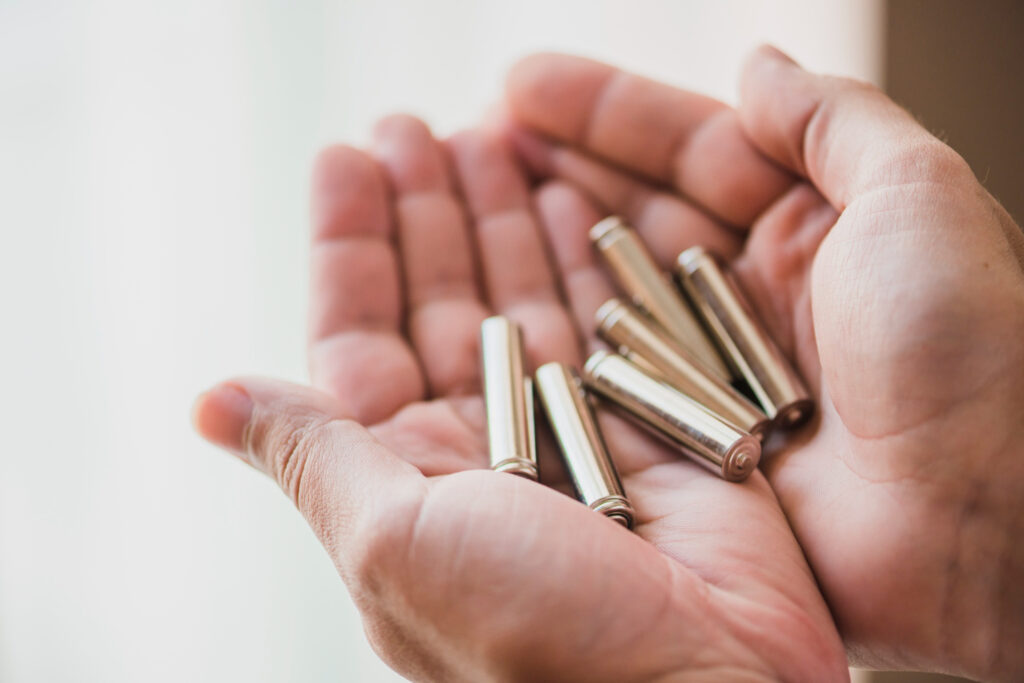
A blackout isn’t just about what you eat; it’s also about how you light your home and cook your meals. That’s why batteries are one of the first non-food items to vanish. Flashlights, radios, and even old-school alarm clocks depend on them, and when panic hits, shoppers scoop up every pack they can find. If you don’t already have a stash at home, you’ll be left in the dark.
Other Article: Forgotten Survival Food Secrets of Our Ancestors
Ice is another overlooked item until the power goes out. As refrigerators warm up and freezers lose their chill, people rush to buy bags of ice to stretch the life of whatever food they have left. The problem is, everyone has the same idea at the same time. Store freezers empty fast, leaving latecomers with spoiled groceries and nothing to keep them cool.
Cooking fuel disappears just as quickly as bread and milk. Propane tanks for grills, charcoal for backyard cookers, these become essentials the moment the stove and oven go dead. Without them, even a pantry full of good food may not help much. Preppers know to keep a steady supply on hand, because once the blackout starts, you can’t count on finding a single tank or bag of charcoal on the shelves.
In a major blackout, the clock starts ticking the second the lights go out. Within three hours, bottled water, bread, milk, eggs, fresh meat, and even the comfort foods are gone. Rice, pasta, and canned goods don’t last much longer. Add in batteries, ice, and cooking fuel, and you’ve got a picture of how fast a grocery store can go from full shelves to bare aisles.
The difference between scrambling with the crowd and riding out the storm comes down to preparation. If you’ve built your supply ahead of time, you don’t have to fight over the last loaf of bread or hunt for bottled water that isn’t there. A well-thought-out stockpile means peace of mind, full bellies, and no panic when the power goes down. The blackout always favors the prepared; make sure you’re one of them.

